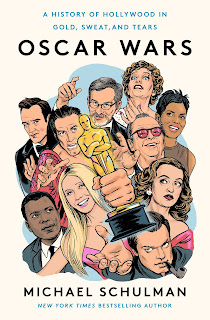Last week, the thought came to me unbidden: Holy shit, I have a Post account!
It’s true. Back when Twitter first went into convulsions, Post seemed the most viable alternative. I set up shop, made the rounds, then promptly forgot about it. I’ll probably forget about it again soon enough.
Yesterday I nosed around Notes, Substack’s answer to Twitter. Could this be the future of social media? I have to say, it looks pretty good. It underscored how many writers I follow are already on Substack. And it has me pondering questions I have long put off: should I start a Substack of my own? Would anybody read it?
Anyway, that’s our first topic this morning. Give us a call. Our lines are open.
What I’m Reading
Winning Fixes Everything: How Baseball’s Brightest Minds Created Sports’ Biggest Mess, by Evan Drellich (2023). If you’re a baseball fan you’re already aware of this book, the definitive chronicle of the Houston Astros’ legacy of cheating, particularly during 2017 when the team won the World Series. (Recent admissions from then-Astros player Evan Gattis aren’t helping the bad blood go away, as any Yankee or Dodger fan will attest.) But I’d also recommend it as an incisive case study about how cultures are built, and how toxic ones can eat away at institutions that appear not only healthy but successful. It’s also about the financialization of every aspect of public life. One Astros player described the team’s mentality—perhaps best exemplified by owner Jim Crane bringing in McKinsey to improve operations, because playing nine innings is exactly like selling widgets—this way: “They just take the human element out of baseball. It’s hard to play for a GM who just sees you as a number instead of a person.” Another choice quote: “The closer I get to the world of the thirty owners, many of them are among the worst people in the world.” Testify, unnamed baseball executive. What makes it all harder to swallow is that the Astros never stopped winning. They’re baseball’s current defending champions—yet in true McKinsey fashion, they parted ways with the GM brought in specifically to right the ship after he’d won them a second title. Sometimes the bastards don’t lose. They don’t even learn.
What I’m Watching
Turn Every Page: The Adventures of Robert Caro and Robert Gottlieb (2022). When I finished reading Caro’s The Power Broker last year, I posted a photograph to mark the occasion. Caro’s four-and-hopefully-five volume biography of LBJ awaits, and this engaging documentary about his life’s work and his enduring relationship with his editor Gottlieb (made by Lizzie Gottlieb, his daughter) has me eager to read them. I was struck by the deep modesty of both men, and by Gottlieb’s belief that having unexpected and intense interests—he collects plastic handbags and consults with ballet companies—contributes to his acuity and the longevity of his career. Above all, it’s a portrait of a genteel literary life out of a bygone era. Every day Caro dons a suit and tie to walk to his office, where he puts in the hours at a typewriter and backs up his work using carbon paper. All I could think as I watched him was Who still makes carbon paper?
What I’m Drinking
Talk to bartenders and you’ll hear tell of the Great Chartreuse Shortage of 2023. This week, a friend told me that in the Seattle area, the price for a bottle has hit three figures. Jason Wilson has a nice overview of chartreuse and what brought its recent scarcity about. I’ve been rationing my own supply, recently dipping into my stash to make a Diamondback after Punch called for this boozy beauty to make a comeback. It’s always been a staple at the Chez K bar—it’s included in my cocktail book Down the Hatch, which I just realized is coming up on its tenth anniversary—but I make it with green, not yellow chartreuse, the way bartending legend Murray Stenson taught me when he was behind the stick at the Zig Zag Café.
1 ½ oz. rye whiskey
¾ oz. bonded applejack
¾ oz. green chartreuse
Stir. Strain. No garnish.

